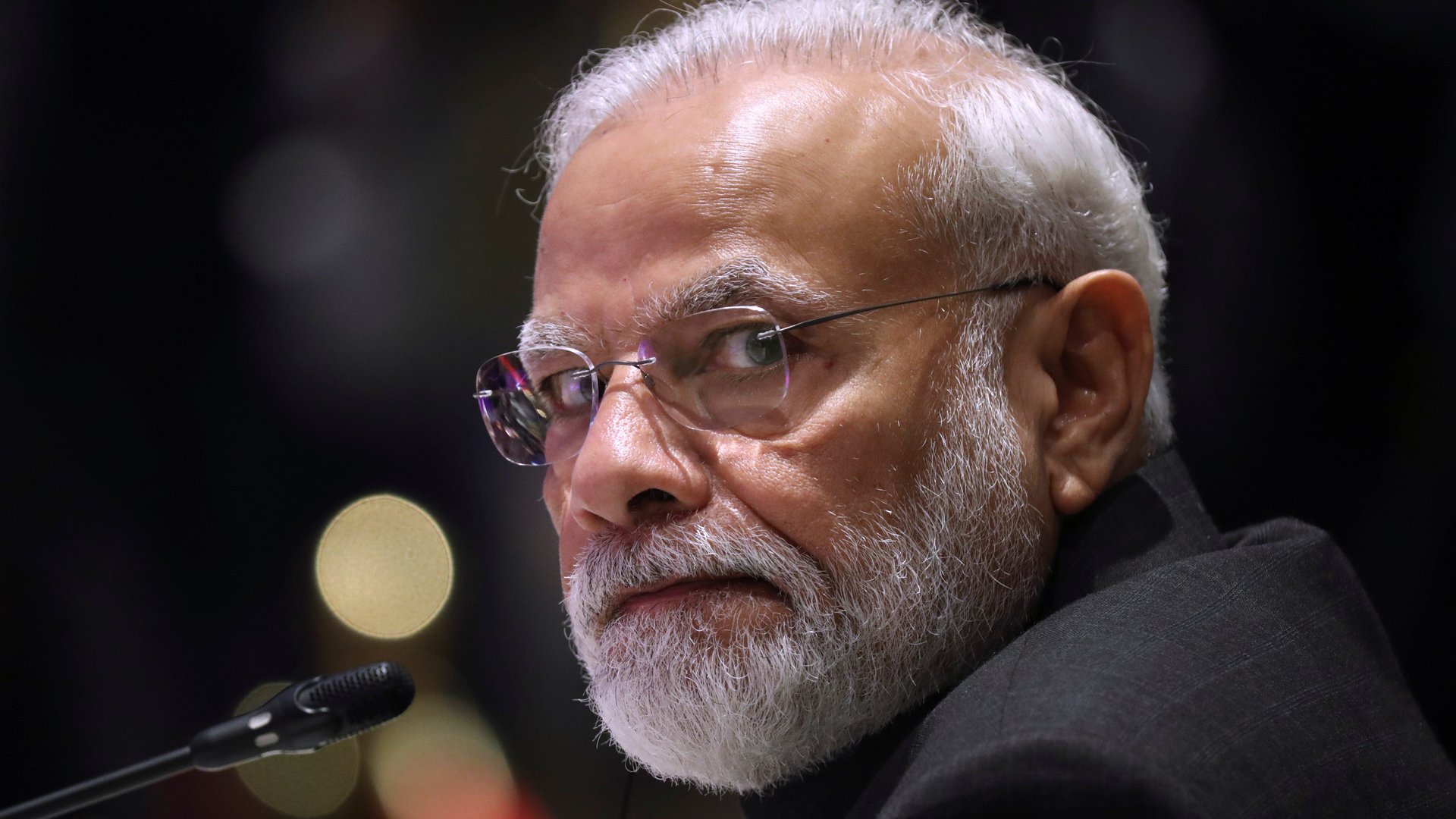Moody’s cuts India outlook to negative due to “probability of a more entrenched slowdown”
India’s ongoing economic slowdown may become “entrenched” and “long-lasting,” according to Moody’s Investors Service.


India’s ongoing economic slowdown may become “entrenched” and “long-lasting,” according to Moody’s Investors Service.
Accordingly, the global agency changed its outlook on India’s sovereign rating to “negative” from “stable,” late yesterday (Nov. 7). The change brings the country one step closer to a downgrade of its sovereign credit rating from Baa2 to Baa3—the lowest investment-grade rating. Ratings below Baa3 are treated as speculative or “junk” by investors.
Moody’s had upgraded India’s ratings to Baa2 in November 2017, after a gap of 13 years. At the time, the agency had said that reforms like the goods and service tax (GST) and demonetisation would turn out to be worthwhile in the long run.
Its latest observations on India’s long-term outlook, though, are far less optimistic.
The Narendra Modi government’s recent measures to help revive the economy haven’t alleviated the risks of a prolonged financial stress among rural households, weak job creation, and credit crunch, Moody’s said. The government also faces “significant constraints” in narrowing its debt levels.
Recent reforms such as corporate tax cuts will curb revenue and Moody’s forecasts that fiscal deficit will stand at 3.7% of GDP in the financial year ending March 2020, much higher than the government’s target of 3.3%.
Moody’s decision to change the outlook to negative reflects increasing risks that economic growth will remain materially lower than in the past, partly reflecting lower government and policy effectiveness at addressing long-standing economic and institutional weaknesses than Moody’s had previously estimated, leading to a gradual rise in the debt burden from already high levels.
While government measures to support the economy should help to reduce the depth and duration of India’s growth slowdown, prolonged financial stress among rural households, weak job creation, and, more recently, a credit crunch among non-bank financial institutions (NBFIs), have increased the probability of a more entrenched slowdown.
Moreover, the prospects of further reforms that would support business investment and growth at high levels, and significantly broaden the narrow tax base, have diminished. If nominal GDP growth does not return to high rates, Moody’s expects that the government will face very significant constraints in narrowing the general government budget deficit and preventing a rise in the debt burden.
Moody’s outlook comes a day after Modi claimed the fundamentals of the Indian economy were sound: “We have constantly maintained our commitment on macro-economy and have abided by fiscal discipline. Today, when global economic activity has come down to 3%, India is growing at more than 5%.”
His administration has announced various measures, besides the corporate tax cuts to shore up the economy and spur credit uptake. Earlier this week, his cabinet cleared a Rs25,000 crore ($3.5 billion) package to revive projects in the stalled real estate sector.
India’s GDP grew at its slowest pace (5%) in six years in the June quarter. The output of eight core infrastructure industries also contracted by 5.2% in September.